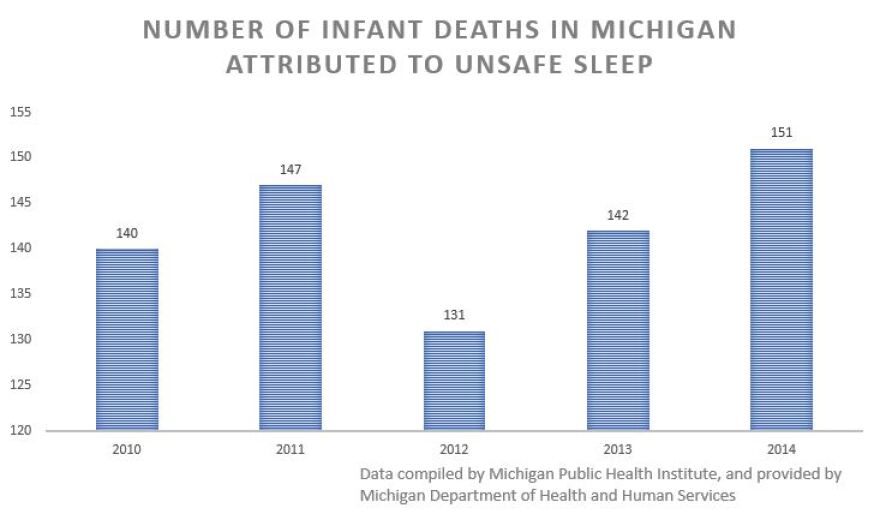Colin Parks gets an email alert almost every time a baby in Michigan dies in their sleep.
Parks is head of Michigan’s Child Protective Services, and he tells me he gets far too many of these emails; they arrive almost every other day.
“In Michigan,” he says, “we lose about 140 to 150 infants a year, and that’s a number that’s been pretty static over time.”
It’s been static, even though Parks, and everyone else who works on infant safety has been desperately trying to get the message out. The message is for all babies to sleep alone, on their back and in an empty crib. To simplify, they use a slogan - ABC - alone, back, crib.
There have been ads, focus groups. Last year, the governor signed a law requiring hospitals to give new parents information on safe sleep before they leave the hospital with their new baby.
And yet, last year, there were more infant deaths from unsafe sleep, not fewer.

“It’s just an epidemic,” Parks says. “And it’s so scary we have not made much progress yet.”
"It's just an epidemic. And it's so scary we have not made much progress yet."
The thing is, most parents do seem to know the recommendations. Which means they either can’t follow the recommendations because they don’t have a safe, empty crib for the baby, or they simply choose to not follow the recommendations.
“All the deaths, they had a place to put baby,” says Barbara Hawkins-Palmer, director of Healthy Kent. She’s telling me about the nine infant deaths in Kent County last year in which unsafe sleep practices were a factor. All of those nine babies she said, had a safe place to sleep.
“So that’s not the answer,” Hawkins-Palmer says. “It certainly hopefully helps, but all of them had another place to put baby, but they chose to put baby in an adult bed, or on the couch, or in other settings.”
And here’s where things get sort of controversial. Because there is also a movement that encourages parents to sleep alongside their infants. It can build bonding with the newborn. It’s great for moms who breastfeed. It is more natural, and you will hear from many, many people that this co-sleeping can be done safely.
“I mean, there are positives to it that make it, I think, even harder to enforce or to practice,” Hawkins-Palmer says.
Here is the part in the news story where I - the reporter - start working the phones, reach out to sources and hunt down one of these parents who knows the safe sleep guidelines, but chooses not to follow them.
But I don’t have to pick up the phone to find one of those parents.
I’m one of those parents.
“We did okaaaay,” my wife Metta says, when I aim a microphone at her.
“But not always,” I say.
We have two children. We mostly followed the guidelines. But not always.
“Not a hundred percent of the time with either kid, no,” Metta says.
“Why not? Why didn’t we?”
“Because …”
It’s something we researched. It’s something we talked to friends about.
But basically, the reason we didn’t always follow the safe sleep guidelines is just that it’s hard to do it all the time. When you are tired, and the baby doesn’t want to sleep, they’re more calm sometimes next to you. I’ve taken naps on the couch with a baby on my chest. And I now know that one is really unsafe.
But for our two kids, and for almost every kid, parents get away with it. And so we tell ourselves and each other that it’ll be fine.
Except sometimes it isn’t. About 150 times per year in Michigan. And that’s why public health professionals keep pushing the message of the ABCs - babies should sleep Alone, on their Back and in an empty Crib.
This story has been updated to show a photo of a baby in a crib with no bumpers, and to include revised numbers on unsafe sleep deaths.







